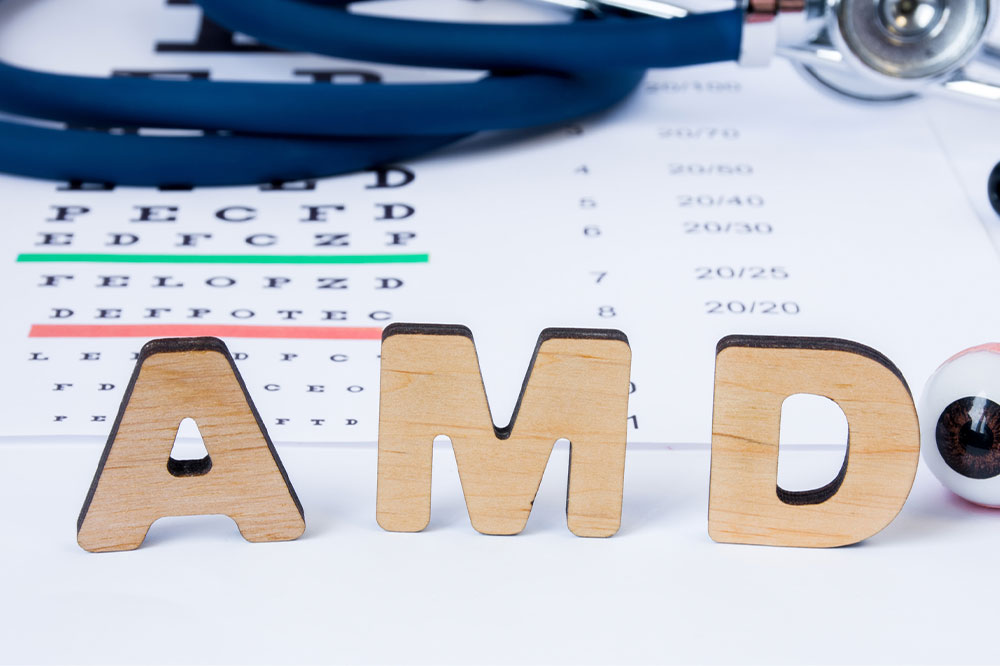
Top 10 common myths about AMD
Age-related macular degeneration (AMD), also known as wet AMD, is a condition that causes vision loss in the center of the retina. The disease can be caused by high blood pressure, diabetes, smoking, and other factors. Age-related macular degeneration does not affect a person’s eyesight overnight but progresses over time. However, diagnosing it early is essential for keeping one’s baseline vision intact. This article debunks 10 common myths about the condition. Read on to know more.
Dry AMD is easier to treat than Wet AMD
Patients with dry age-related macular degeneration (AMD) can see improvement within just one month after starting a new treatment plan. Many people think dry AMD is more difficult to treat than wet AMD, but the opposite is true. While both forms of the disease can cause vision loss and blindness if left untreated, dry AMD does not require surgery or prescription treatment as frequently as it does for those with wet AMD.
One will know right away if they have AMD
The truth is that most patients with AMD do not know they have it. Generally, at the initial stages, it creates only minor vision changes or shows no symptoms at all. It is only at a later stage, when the vision starts getting worse, does a person realize that something is wrong with their eyesight. For this reason, it is suggested that one must get their eyes checked regularly to keep their health in check.
Nothing can be done to prevent the progression of AMD
Many believe that there is nothing that can be done to manage AMD. However, this is not true. Making a few changes in the meal plans and regularly consulting with a doctor can help prolong a person’s vision. It is best to consume more leafy vegetables and oily fish for the extra nutrients required for good eyesight.
If a person has a family history of wet AMD, they will get it too
Family history does not guarantee that a person will get AMD. There are several factors, such as advancing age, genes, cholesterol levels, and blood pressure, that are responsible for AMD development.
All AMD progresses at the same rate
While it is true that AMD progresses at the same rate for most people, there are exceptions. The rate of progression varies from person to person and can be accelerated or slowed by factors like meal plans or genetics. AMD is not a disease that progresses linearly; it is more like an onion with layers of complications, each layer adding to a person’s symptoms as they age. At the core of this, onion is those two leading causes: age-related macular degeneration (AMD), which affects dry eyes and cataracts, as well as wet AMD (wet AMD being more common among those over 60 years old), which causes blood vessels in the eye to leak fluid into them (known as clouding).
Consuming carrots can improve vision
Carrots are one of the most popular foods in the world. They are suitable for everyone and taste delicious, but no evidence eating carrots can improve a person’s vision. Carrots contain beta-carotene, which helps prevent macular degeneration (AMD) and cataracts. Besides carrots, consuming foods rich in vitamins A, C, and E is important. Good nutrition helps protect the eyes from developing drusen, a debris buildup in the innermost layer of the eyes that contribute to AMD. Good nutrition can promote good eye health; however, it is not a cure for AMD or cataracts.
Dry and wet AMD are entirely different diseases
The most common type of macular degeneration is dry AMD, which is caused by age-related changes in the macula. As a person ages, the retina—the layer behind the eye—becomes more fragile and atrophies. This causes damage to photoreceptors (cells that convert light into electrical impulses), leading to loss of vision. Wet AMD occurs when fluid builds up in or between layers of tissue around blood vessels or nerve fibers in or near the retina. Wet AMD often begins as early as midlife but can develop later in life if it progresses slowly enough for a person not to notice any changes until it is too late.
Young people will not get AMD
You may have heard that AMD is a disease that only affects older people and that young people do not get it. This is not true. Most cases of AMD are diagnosed in adults over 60 years old. However, it is not just older people at risk for developing this condition—anyone can get it at any age.
Reading in a dimly lit atmosphere will damage the eyes
You may have heard that reading in dim light will damage the eyes. This is absolutely not true. Reading in dim light has nothing to do with age-related macular degeneration. Reading in a dimly lit area can put more stress on a person’s eyes and make the reading experience less enjoyable. Other than this, it does not cause any other harm to a person’s eyes. It is perfectly safe to read in dim light as long as a person is able to read a book or a magazine comfortably.
People with AMD will eventually go blind
Many people give up thinking that any amount of medical treatment will not stop the progress of their AMD condition and that they will eventually go blind. Many rumors lead people to not even go for a checkup or treatment from a certified doctor. Before the advent of advanced medical methods, some people with AMD who gave up hope did indeed go blind. However, many advancements in the ophthalmology field have led to many people being treated properly.
While there are no easy answers, knowing what risks a person may face as they age and how to protect oneself from the risks is crucial. If you or someone you might know has been diagnosed with AMD, make sure they see an eye doctor who can diagnose and treat this condition. We hope this post helped debunk some common myths around AMD.


